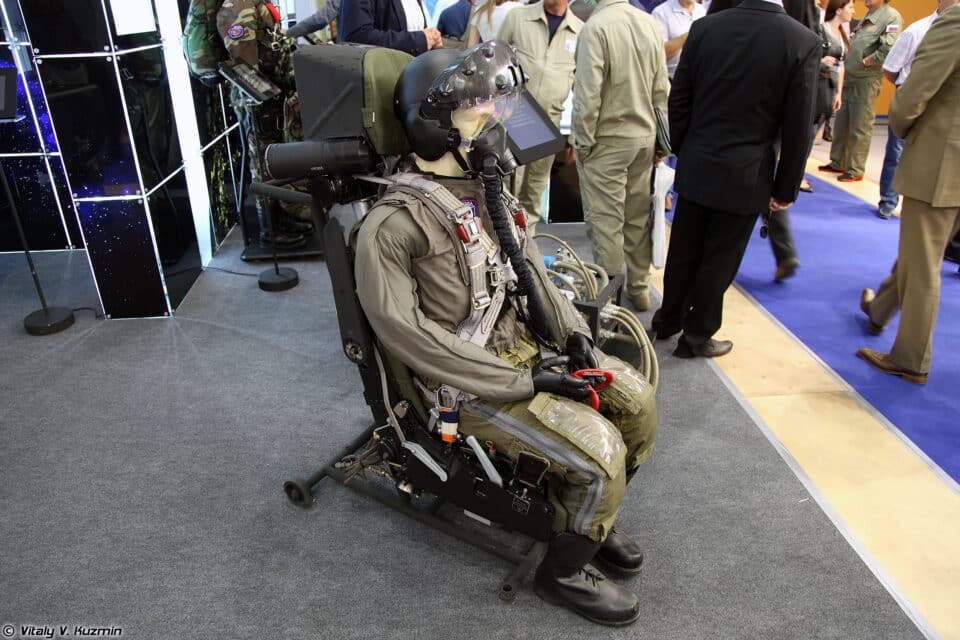Aerospace
India puts Russian K-36 ejection seat in Tejas to bar UK impact

India upgraded its “Tejas” fighter, using Russian technology, to avoid British restrictions. The Russian-designed K-36 seats will replace the Martin Baker ejection seats in the Indian fighter plane in order to get over the British restriction on sales to Argentina.
A crucial diplomatic meeting between Brig. Gen. Xavier Isaac, the head of the Argentine Air Force, and Dinesh Bhatia, the Indian ambassador to Argentina, took place on August 30. Their talk was primarily centered on the possibilities for bilateral relations between the two countries to grow, particularly in light of Argentina’s probable purchase of TEJAS combat planes and helicopters.
10 interesting facts about Ka-52 helicopter(Opens in a new browser tab)
The prospect of Argentina acquiring these military equipment shows a substantial strengthening of their strategic alliance. Both the MiG series and Sukhoi Su-30MKI fighter jets prominently incorporate the Zvezda K-36 seat, which has a long history of military aviation innovation. The Zvezda K-36D, the seat’s original design, was created in the late 1960s with the express intention of safeguarding MiG-25 Foxbat pilots. This aircraft, which gained fame for its rare Mach 3 speed and capability for stratospheric flights, was the pinnacle of famed Soviet aviation designer Mikhail Gurevich.
“The Argentinians have received a firm proposition. The process to replace the British components has already begun, a HAL official reportedly stated.
Why is China concerned about the Ka 52 being shot down?(Opens in a new browser tab)
In a strategic move, the United Kingdom has intervened to prevent Argentina from acquiring fighter jets to strengthen its military. Argentina’s procurement process has been seriously hampered by the UK’s imposition of embargoes on aircraft parts made within its borders. In addition, the UK put diplomatic pressure on Spain, forcing it to drop out of a deal to give Argentina excess Mirage-F1M fighter fighters.
The Russian K-36 seats will be placed in place of the Martin-Baker ejection seats in order to prevent the TEJAS agreement from succumbing to British strong-arm tactics. The HAL representative said, “We already have the seats available.” K-36 ejection seats are already in the possession of the HAL, which is working on the Sukhoi Su-30MKI under licence.
The K-36 ejection seat is a remarkable piece of engineering that has saved the lives of countless military pilots and aircrew members over the years. Developed by the Soviet Union during the Cold War era, the K-36 ejection seat is known for its reliability and effectiveness in rapidly ejecting pilots from a stricken aircraft in emergency situations. It has been widely used in various military aircraft, particularly in Soviet and Russian aircraft, and has gained a reputation for its robust design and high survival rate for occupants.

Aerospace
When Ratan Tata was denied entry to the airfield at the Aero India show, he waited

During our visit to Aero India 2019, we had the unexpected opportunity to see Ratan Tata at the event, which was a thrilling moment for us. However, there was a surprising hiccup when the security staff didn’t allow him to enter due to a lack of a security pass.
Despite this, he remained calm and patiently waited for about 20 minutes until a member of the Tata team brought him the required pass, after which he calmly proceeded inside. It was a humbling sight, showcasing his composed demeanor even in such situations.
Ratan Tata ji is not only a renowned industrialist but also a trained pilot, holding a pilot’s license. In 2007, he became the first Indian civilian to fly the F-16 Falcon during the Aero India show in Bangalore—a proud moment for the nation.
His passion for aviation extended beyond flying, as he played a key role in shaping India’s aerospace industry. Under his leadership, Tata ventured into manufacturing and maintaining aerospace components while upholding its legacy of quality. Notably, Tata’s collaboration with Airbus to develop and manufacture the C295 aircraft is a testament to its growing influence in the sector.
-

 Aviation2 months ago
Aviation2 months agoMicrosoft Flight Simulator Raises $3 Million to Bring Back the An-225 Mriya
-

 Airlines2 months ago
Airlines2 months agoQatar Citizens Can Travel to the United States Without a Visa
-

 Aviation2 months ago
Aviation2 months agoQatar Airways bans these new Electronic Devices on plane
-

 Defence2 months ago
Defence2 months agoWhich Country Has the Largest Fleet of Fighter Aircraft?
-

 Airlines6 days ago
Airlines6 days agoDAMAC Air: Dubai’s New Luxury Airline Offers Free Flights for Registration
-

 Airport2 months ago
Airport2 months agoWestern Sydney Airport Welcomes Its First Plane After 6 Years of construction
-

 Airlines5 days ago
Airlines5 days agoAir India to Launch aircraft maintenance training institute in Bengaluru
-

 Aviation2 months ago
Aviation2 months agoDid you know ? Once Boeing 747 carried 1088 passenger in 1991








